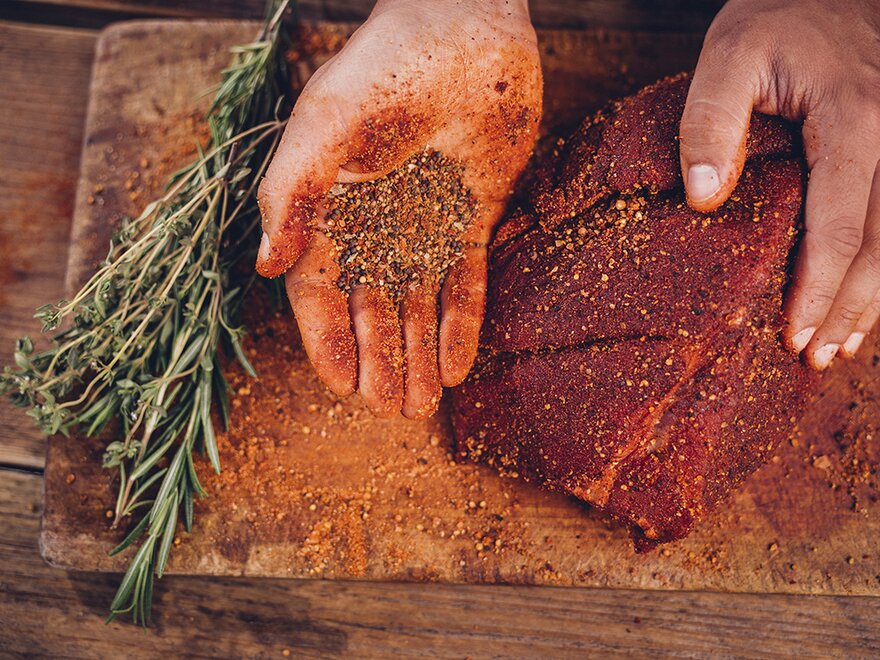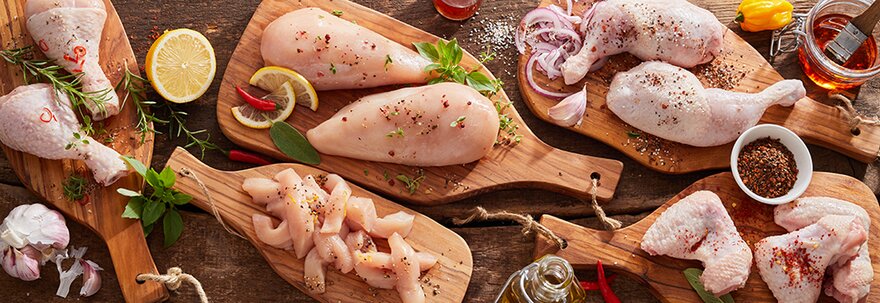Though salt beef is traditionally made from a cheap cut of meat, customers are hankering for a taste. Here's why affordability is a top consideration for meeting demand
The biggest queue in east London isn't hard to find. It's always in the same place, at all times of the day and much of the night. In a part of the capital not short on talked-about new restaurants and bars, the most in-demand bit of grub can be found at 159 Brick Lane, where Beigel Bake has been churning out bagels, often with salt beef inside, since 1974.
Is it the best food in east London? It's good, but few judges would go that far. Is it the best experience? It's a queue which snakes outdoors in all weathers, so while there's plenty of character to be enjoyed – not least a glimpse of the bakery at the back – it lacks a little in terms of finesse. How's the service? Pretty decent, in my experience, although if you're not sure what you want the women behind the counter can be a touch brusque.
So what makes it so popular? The reality is that, in a town where food trends and openings come and go at dizzying speed, Beigel Bake represents authenticity; a taste of a London that has long since slipped out of view.
It's something unique and valuable, appealing to locals and tourists alike, and something you just can't find elsewhere.
But in a world increasingly defined by global flavours – as true when it comes to meat and poultry as anywhere else – that has immense value. American options, from hamburgers of all possible iterations to barbecue of varying authenticity and fried chicken on every corner, proliferate in modern Britain. Salt beef (a delicacy whose history in the UK and the US dates back centuries) is much harder to find, even if London boasts a solid roll-call of options.
And now, in Ruben Dawnay, salt beef has a young and compelling advocate. Dawnay, the 22-year-old who founded Ruben's Reubens in 2019, has built a big reputation in London's food scene with his versions of Jewish deli classics such as the reuben sandwich. He started with salt beef.
"It's definitely an underappreciated art," he says. "Smoked salmon, for example, gets more attention. I think it's to do with the association with being cheap."
In this day and age, though, that is a big advantage. When money is short, cheaper options that demonstrate the chef's skill should be in big demand – doubly so when they have such a rich heritage. So is salt beef about to get the respect it deserves?
Rube health
Salt beef is made from brisket, one of the less expensive cuts of beef. Brisket has come into fashion of late due partly to its popularity in American barbecue, which has made an impact in the UK. To make salt beef, a piece of brisket is cured with a mixture of salt, sugar, Prague powder and spices, for at least seven days but more typically 14, depending on the thickness of the meat.
Then it's cooked. "I tried all sorts of different methods to get juicy, tender salt beef," says Dawnay, who was inspired by his Jewish heritage. "Traditionally you would boil it for a few hours or simmer it, but I don't think you get enough control. I tried it in a slow cooker, which was a much better way to do it at home overnight, but eventually I've come to use a Rational oven, cooking at a certain temperature, steaming overnight. That gives you the perfect slice."
The quality of the beef is important, too. "When I started I was watching my pennies, and I bought cheaper brisket but it wouldn't get tender. Then I tried the same with a slightly nicer [piece of] brisket, and it was much more relaxed and tender. It really makes a difference."
Such attention to detail has made Dawnay, who started his business using a smoker in his Brixton back garden, a busy man. He has just completed a two-month period in charge of the food at the Seed Library in Shoreditch, where he deployed his salt beef in a ‘Reuben spring roll': salt beef with Russian dressing in a spring roll. Next, he's off to bakery and coffee shop Rye by the Water in Brentford for a residency (from 15 April), showcasing his smokehouse skills in the evenings and weekends.
Is there a growing market for what he does? Sandwiches of all kinds are as popular as they have been in years – from the vada pav served at Bundobust's restaurants in Leeds, Manchester and Liverpool to the banh mi available at Hai Cafe in Clapton – and his Reubens offer the sort of flavour explosion that is in demand right now.
"With salt beef, I think you get lots of people who love it and then others who are indifferent," he says. "If you like that pickle-mustard combination, salt beef is going to be your thing. Obviously, too, it's a meat sandwich, so not everyone is going to like that."
For all its British roots, salt beef as cooked by Dawnay evokes American tradition. Salt beef was taken to the US by Eastern European Jewish emigrants, where it became hugely popular. There's also a strong link to barbecue, Dawnay points out. "It's about slow cooking, getting the best from cheaper ingredients," he says. "There's a strong link with pastrami – they're basically the same thing, except pastrami is smoked."
Herd mentality
Irish meat has long been used to produce salt beef; in the US, salt beef is regarded as the iconic Irish dish, even if it doesn't have that status in Ireland itself. What most consumers can agree on is the quality of Irish beef, which remains hugely popular with British operators.
"The cows in Ireland have a diet of nutrient-rich grass, wild herbs and clover producing a depth of flavour," says Irish chef Anna Haugh, who uses Irish beef at her London restaurant, Myrtle. "You also know that it's coming from well looked-after herds and good farming practices that have been passed down the generations."
The trend now is to use cheaper cuts, according to Donal Denvir, UK general manager, Bord Bia. "Nose to tail cooking is a popular approach," he says. "Over the past year we have seen chefs selecting premium cuts whilst exploring further with ‘bone-in' and offal such as bavette, cheek and onglet to help minimise food waste.
Simon Smith, client services director at Aubrey Allen, agrees: "At a time when everyone is talking about sustainability and the cost of living crisis, full carcass utilisation has never been more important. There is often a stigma attached to offal in this country that doesn't exist across the Channel, and elsewhere, and it is changing how people think and view it: partly through language and partly by showcasing what a delicious and versatile category this represents."
According to Rupert Ashby, chief executive of the British Frozen Food Federation, frozen meat and poultry is the most sustainable option. "One of the main reasons why frozen food is often significantly cheaper than the fresh alternative is due to the amount of waste generated in the fresh supply chain when goods are damaged or spoil before they are sold," he says. "Reducing waste throughout the frozen food supply chain means that supermarkets and consumers alike can be safe in the knowledge that they are making a sustainable choice."
Poultry return
Chicken remains remarkably popular. According to Seara Meats, a survey of 10,000 consumers in the UK, US, Germany, France, and Ireland found that chicken purchases had increased at a time when consumers were cutting back on other meat. "Chicken is our biggest category in frozen meat, and the most consumed protein," says George Herd, chief executive of Farmfoods.
Affordability is key. "Clearly, in the current climate affordability is a concern for many. We were already seeing an increase in demand for chicken before the current crisis," says Marcelli Ferreira of Seara. "In 2022, in the UK alone, our gross revenue increased 21% on 2021. What's really driving this increase is that people want food that's healthy, tasty and versatile. Our chicken is all three."
That message is echoed by Bidfood's public relations executive Olly White. "Chicken thigh sales are at an all-time high, as are breast and bone-in, including the wing and the leg," he says. "While the breast is seen as easy to prep, thighs contain just as much protein and are even juicier. A fantastically adaptable meat that can be used in many dishes ensuring nothing goes to waste – and with food waste being so topical right now, it makes this meat the perfect alternative."
EHL Ingredients, meanwhile, offers a range of spice blends from around the world for barbecue foods under its Lähde brand, all of which are suitable for meat. Alongside Korean and Brazilian flavours there's American barbecue blends, perfect for cheaper cuts of meat.
Whichever route you choose, one thing is non-negotiable: a passion for the product, the kind of passion that makes Dawnay's salt beef so good. "I went proper nerdy and geeky when I was working out how to make it," he says. "It's ridiculously scientific." If you want to try it yourself, get down to Brentford after Easter and join the queue.







